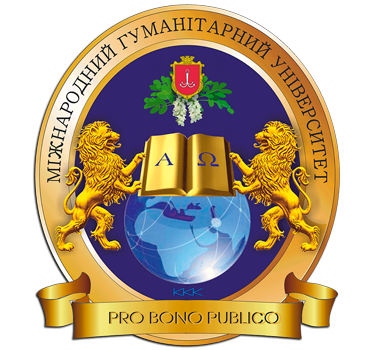ПОРІВНЯЛЬНА ХАРАКТЕРИСТИКА ЗМІН СИСТЕМИ ГЕМОСТАЗУ У ПАЦІЄНТІВ З РІЗНИМ ШАНСОМ РОЗВИТКУ СИНДРОМУ ЖИРОВОЇ ЕМБОЛІЇ З ВИКОРИСТАННЯМ МЕТОДУ НИЗЬКОЧАСТОТНОЇ П’ЄЗОЕЛЕКТРИЧНОЇ ТРОМБОЕЛАСТОГРАФІЇ
DOI:
https://doi.org/10.31379/2411.2616.16.2.10Ключові слова:
НПТЭГ, политравма, синдром жировой эмболии, коагулопатия.Анотація
Введение. Политравма занимает одну из лидирующих позиций среди причин смерти взрослого трудоспособного населения. Комплексные сочетанные травмы опорно-двигательного аппарата могут сопровождаться эмболией липидными глобулами, которые, в свою очередь, играют роль в активации сосудисто-тромбоцитарного звена гемостаза. В условиях достаточного размера липидных глобул в дальнейшем возможно развитие синдрома жировой эмболии (СЖЕ), однако клиническая манифестация вышеупомянутого состояния происходит не всегда. Цель исследования. Сравнить изменения в системе гемостаза у пациентов с различным шансом развития СЖЕ с помощью метода низкочастотной пьезо- электрической тромбоэластографии (НПТЭГ). Материалы и методы. Состояние системы регуляции агрегатного состояния крови оценивался в группе из 72 пациентов с диагнозом политравма на третьи сутки пребывания в отделении интенсивной терапии общего профиля Одесской областной клинической больницы. Изменения оценивались с помощью НПТЭГ: в группе А из 38 пациентов, без клинических признаков СЖЕ и с прогностической оценкой развития СЖЕ по Борисову ≤5 баллов на момент поступления; в группе Б из 34 пациентов, без клинических признаков СЖЕ и с прогностической оценкой развития СЖЕ по Борисову ≤10 баллов на момент поступления; контрольную группу (n = 20) составили здоровые доноры, которым проводилась НПТЭГ. Результаты исследования. Показатели НПТЭГ у пациентов групп А и Б существенно не отличаются (р <0,05). На фоне активации сосудисто-тромбоцитарного звена гемостаза отмечаются существенная структурная и хронометрическая гиперкоагуляция с повышенной генерацией тромбина и активацией фибринолитической активности крови. Результаты исследований отображают группу пациентов с политравмой как когорту, в которой наблюдаются выраженные расстройства системы регуляции агрегатного состояния крови. Выводы. Метод низкочастотной пьезоэлектрической тромбоэластографии демонстрирует отсутствие статистически значимых изменений в системе РАСК пациентов с политравмой и разной прогностической оценкой развития СЖЕ по Борисову на момент поступления. Данные исследования необходимо взять во внимание при: разработке протоколов ведения пациентов с коагуляционными нарушениями при политравме; стратификации риска развития ЖЭ и выбор оптимальной терапии у больных с политравмой; оптимизации фармакологической и не фармакологической корекции системы РАСК.
Посилання
Баранов А.В. Медико-тактическая характеристика травм таза у пострадавших в дорожно-транспортных и других нештатных происшествиях в условиях областного центра европейского севера России (на примере г. Архангельска) / Баранов А.В. // :
автореф. дисс. канд. мед. наук. Архангельск, 2013. 24 с.)
Повреждения таза, как аспект дорожно-транспортного травматизма / Баранов А.В. и соавт.// Врач-аспирант. – 2012. – Т. 52, – № 3. – С. 389-392)
Кузьмин А.Г. Дорожно-транспортный травматизм как национальная проблема / Кузьмин А.Г.// Экология человека. – 2011. – № 3. – С. 44-49)
Политравма. Неотложная помощь и транспортировка. / Агаджанян В.В. и соавт. // Новосибирск: Наука. – 2008. – 320 с.
Champion, H.R. A Revision of the Trauma Score / H.R.Champion // J. Trauma. — 1989. — № 29. — С. 623-629.)
Boyd, C.R. Evaluating Trauma Care. The TRISS Method / C.R. Boyd // J. Trauma. — 1987. — № 27. — С. 370-378.
Georgopoulos, D., Bouros, D. Fat embolism syndrome: clinical examination is still the preferable diagnostic method / D. Georgopoulos, D. Bouros // Chest. — 2003. — № 123. — С. 982-983.
Gossling, H.R., Pellegrini, A.D. Fat embolism syndrome. A review of the pathophysiology and physiological basis of treatment / H.R. Gossling, A.D. Pellegrini // Clin. Orthop. — 1982. — № 165. — С. 68-82.
Пащук, А.Ю., Фадєєв, П.А. Диагностика и лечение жировой эмболии. / Пащук, А.Ю., Фадєєв, П.А. // Ортопедия, травматология и протезирование. – 1991. – №12. – С. 41-44.
Борисов М.Б., Гаврилин С.В. Синдром жировой эмболии при наличии сочетанных травмах. / Борисов М.Б., Гаврилин С.В.// Вестн. хирургии им. И.И.Грекова. – 2006. – № 165 (5). – С. 68—71.
Can we use the low-frequency piezoelectric tromboelastography for diagnosis coagulation disorders? / Tarabrin O.A.et al. // European Journal of Anaesthesiology. – 2013. – Vol.30. – P. 92.
Современные аспекты анестезиологического обеспечения и профилактика тромбо-геморрагических осложнений у больных при эндопротезировании тазобедренного сустава/О.А.Тарабрин, И.Л. Басенко / Одесский государственный медицинский университет /Одесса – 2009 – 36с.
Тромбоэмболия легочной артерии. Современная концепция, базовые принципы терапии / А.В.Сімовських, Е.П.Кирпичникова, О.А.Тарабрін / Одесский государственный медицинский університет – Одесса 2003 – 13с.
Low-frequency piezoelectric thromboelastography method in studying of haemostatic system / Tarabrin O./ ESA Academy / Jun 2, 2018 – 1с.
Технологія низькочастотної п’єзотромбоеластографії у моніторингу протитромботичної терапії/О. О. Тарабрін, І. І. Тютрін, П. О. Тарабрін, Д. С. Володичев, Р. Є. Сухонос, О. С. Суслов, І. В. Твердовський, І. М. Кузьмич, І. Л. Басенко/Клиническая анестезиология и интенсивная терапия № 2(12); 2018; стр. 23-35.
Низькочастотна п’езотромбоєластографія цільної крові (алгоритми діагностики та корекції гемо статичних розладів): практичний порадник / О. Тарабрін, І.І. Тютрін, В.В. Удут, П.О. Тарабрін/ ПФ «Університетська книга», 2018. 200с.






